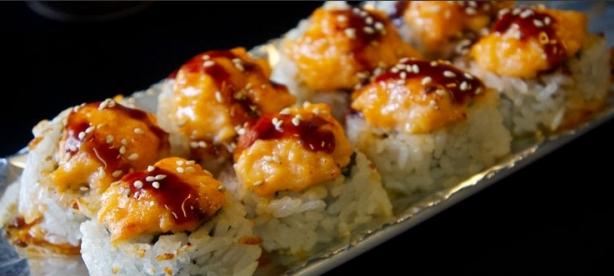Fast rolls: several interesting recipes
Fans of Japanese cuisine who keep fasting orwho are convinced vegetarians, are often frustrated with the suggestions of sushi restaurants. When ordering not a quick dish, they are often found in the temporarily banned foods brought. And I'm sorry for the money, and I'm ready to eat - and then there's such grief. And if such sufferers do not want to give up their favorite dishes, they will have to learn how to cook lean rolls at home. At first glance the process seems simply unworkable, but with some practice you will cook them faster than regular pancakes.

General cooking principles
If so sort out, lean sushi and rollsdiffer from not lent exclusively fillings. So you need to master the very process of their folding - and you can start experiments with the "insides". In the beginning, you need to do rice. The special, for sushi, is rather expensive, and at the same time it has no fundamental differences with Krasnodar's round-grained - it is quite sticky for such purposes. Rinse rice is not necessary; it is poured into boiling water, taken in the ratio 1: 1. First the cereals are cooked with a strong fire under the lid. After seven minutes it decreases, and the cooking continues until all the water is absorbed. At this stage chefs have differences:
- Some believe that rice vinegar should be pouredbefore removing from the hob, others - that they should sprinkle after. In the absence of rice vinegar, you can make him a substitute: in two tablespoons of wine mix half a spoonful of sugar and a half teaspoon of salt.
- Sometimes rice is left in the saucepan for "ten minutes"; Other cooks spread it on a wooden board, so that excess moisture will escape from it.
What you choose is your business.
The assembly begins. On a special mat (if you have one) or the board spreads smoothly down the nori sheet. Fine rice is distributed along it. One edge is left free of it by a centimeter and a half - for gluing. According to the drawings, the selected filling is laid out, and the nori rolls up with a clasp-or a mat, like the Japanese do, or with hands. The resulting sausage is cut with mugs in a thickness of one and a half to two centimeters - and your lean rolls are carried to the table, where the appropriate sauces and condiments are exhibited.

In the days of a lax post
Now deal with the filling. When fish are allowed, and if you do not include all kinds of seafood, the choice is extremely rich.
- Sliced light salted salmon, cooked shrimp and pickled cucumber.
- Cucumber (this time fresh), smoked eel (or sprat), avocado, leaf lettuce, sweet pepper and lean mayonnaise.
- Cooked mussels with octopus, cucumber (here you can both fresh and salty), avocado - and roll in orange caviar.
- Fried shiitake with shrimp and fresh cucumber. Advised to cover the raspberry caviar.
- Salmon or eel with cucumber and cheese. In this case, the roe is taken green. And since we have lean rolls, we take the cheese tofu - it's soy, you can post it.
Where a lesser choice is given on the days when the fish refers to the fast.

Norimaki
These are the simplest and really lean rolls. At home they are prepared quickly and without difficulty. All preparatory work is carried out, as already described. The cucumber is washed (the peel from it is not peeled off) and is cut along into four parts. Seeds are cut out, and each quarter is cut by thin plates, half a centimeter wide. According to the rice placed on the nori, a strip of wasabi is held in the center. On it and put cucumber strips. Roll rolls up, cuts and is eaten.
Mushroom filling
Depending on what kind of mushrooms you will have lean rolls, their preparation for wrapping is slightly different:
- Oyster mushrooms. They need to boil in water, slightly salted and flavored with soy sauce.
- Champignon. They fry; when they stop to start the juice, saturate and water again with soy sauce.
- Shiitake. Soak for half an hour.
Prepared mushrooms are cut with strips. You can add avocado straws or carrots to them - grated fresh or marinated in Korean. The filling is laid out similarly to how the cucumbers were placed in the previous recipe. Sausages are appropriately cut and eaten with pleasure.

Vegetable rolls
If you started lean rolls, recipes can becomplement any vegetables that you like. However, it is better to choose those that can be put into operation raw (with the exception of mushrooms, of course). On the first occasion, you can try the following stuffing: cucumber, ripe avocado, Bulgarian pepper and tomato are cut into strips. Carrots can be crumbled the same way, and you can rub on a Korean grater. The resulting vegetable mix is laid out according to rice and rolled into sausage.
If you like lean rolls and you learntheir deftly twist, for sure you will enrich the list of fillings with your inventions. Do not forget tofu in experiments - many foods taste boring without cheese, and tofu to quick ingredients does not apply.
</ p>


